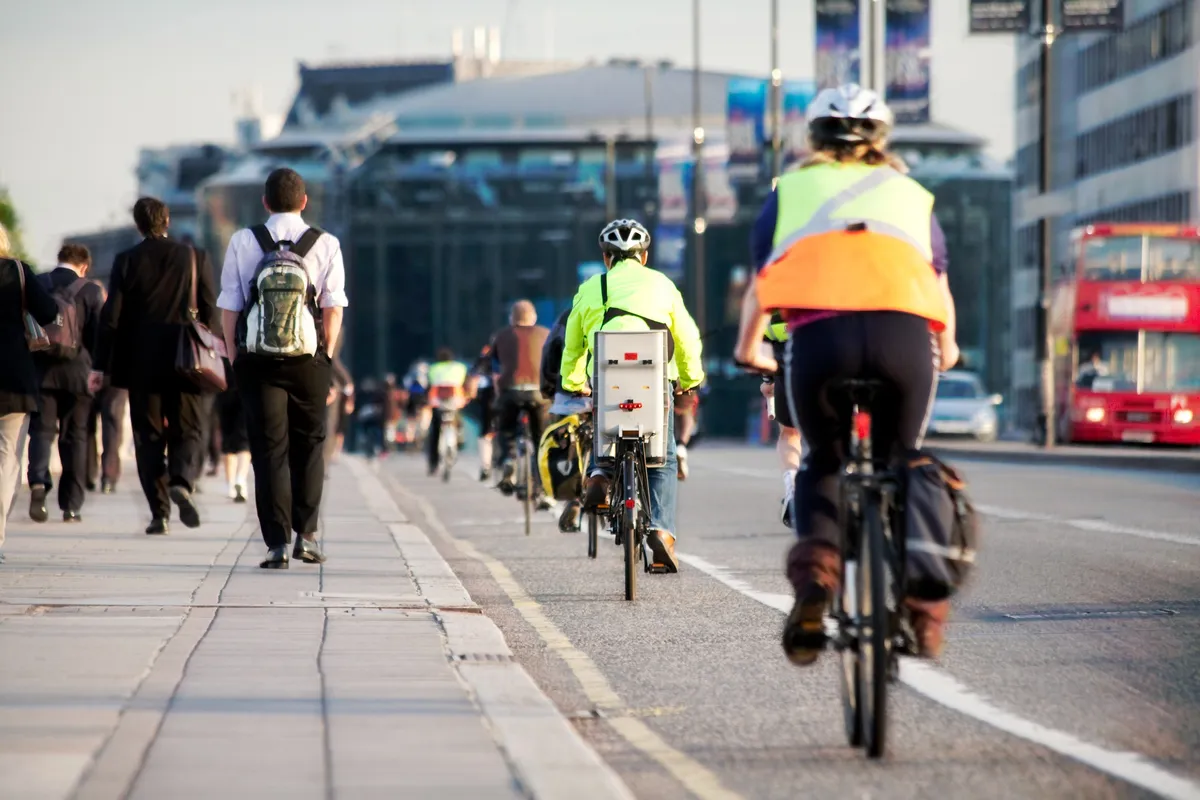Fasted training has grown in popularity as a way to burn fat and improve efficiency on the bike.
But what exactly is fasted training, what are the potential benefits and risks, and how can you effectively add fasted training to your schedule?
To find out, we spoke to Will Girling, performance nutritionist for WorldTour team EF Education-Nippo, and Javier Gonzalez, lead performance nutritionist at Ineos-Grenadiers and a researcher at the University of Bath.
What is fasted training?
Fasted training involves riding on an empty stomach, primarily to encourage your body to burn more fat for fuel, rather than carbohydrate, in order to improve your endurance. This usually means riding in the morning without having eaten anything since dinner the night before.
“Because you haven’t eaten anything, you need to stay at a low workload the whole time, around zone two (56 to 75 per cent of FTP if you're training with a power meter, or 69 to 83 per cent max heart rate), so relatively easy riding,” explains Girling.
You can read our training zones explainer for more on how to set and use heart rate and power training zones.

Gonzalez says pro riders now like to mix up how they approach fasted training.
Some Ineos riders have a black coffee for breakfast and only water during the ride. Others do the first hour of their ride fasted but then start fuelling towards the end. Others have breakfast, in order to fuel the first half of their ride, but then stop fuelling in order to finish the ride in a fasted state. And some even fast after an evening ride so they don’t take on carbs until the morning.
What does fasted training do?
Your body’s energy system can be compared to a hybrid engine in a car. Whereas a car can switch between petrol and electricity, you can switch between fats and carbs.
The goal for endurance riders is to become efficient at using both sources of fuel. Fasted training helps us to get better at burning body fat, not just carbs.
“One of the main adaptations you get is an increase in the capacity to use fat as a fuel,” explains Gonzalez.
This helps to improve stamina and aid body composition. But it’s also why you have to do fasted rides at a low intensity, which is when your body uses more fat than carbohydrates for fuel. If you push too hard, you will start burning carbohydrates and ultimately run out of fuel.

“At a high intensity you won’t be able to break down fat quickly enough, so stay at a low intensity,” says Girling.
Another benefit is what is known as mitochondrial biogenesis. “That means the creation of more mitochondria, or aerobic cells,” explains Girling.
The stress of fasted training encourages your body to adapt by developing more mitochondrial cells, which help to burn fat for fuel. By burning more fat for fuel, you will spare your carbohydrate stores for the final stages of a race. You also get a higher adrenaline response from fasted training. Adrenaline regulates fat metabolism to help you burn more fat for fuel.
What are the risks of fasted training?
Fasting severely limits what you can do in training as a cyclist. As it only works with easier rides in zone two, you can’t use it for your high-intensity or interval training sessions, according to Girling. “If you did it all the time, it would hamper your ability to train properly," he adds.
In fact, too much fasted training could reduce your ability to burn carbohydrates during races. “Imagine your enzymes as builders,” explains Girling. “We have builders that break down fat and builders that break down carbohydrates. If you do all of your rides fasted, you will start to hire more builders to knock down fat walls, but you will also start to lay off the builders who break down carbohydrates walls.
"Now, when you take on carbs during a race, you will find you don’t have enough builders to break down those carbohydrate walls. So you will be significantly less efficient. That’s why you need to train regularly with carbs, too.”
Fasted training may also hamper your immunity, which is why it’s used very sparingly by Ineos Grenadiers. “Fasted rides are not used as much as people might think and carbs are still important for most training sessions,” explains Gonzalez.
So what's in it for me?

Fasted training is a well-researched strategy and even British Cycling recommends it as a way for intermediate-level riders to burn fat and lose weight.
It suggests trying it out on your gentle morning ride if you're commuting by bike. Testing it out on the turbo or smart trainer is another safe way to see how you respond, before hitting the roads. But the secret is to use it sparingly.
“Including just a few fasted sessions is a nice way to get some of the benefits without some of the downsides,” says Gonzalez.
“The key points would be to not do this too often and to keep the intensity low. Having a black coffee before the ride can also help, as the caffeine can reduce the perception of effort.”
Girling says it’s important to limit the length of fasted rides. “Some pro riders will do longer rides but for your everyday individual doing one to two hours of fasted training in the morning would be ideal,” he says. “But only do it a maximum of two times a week.”